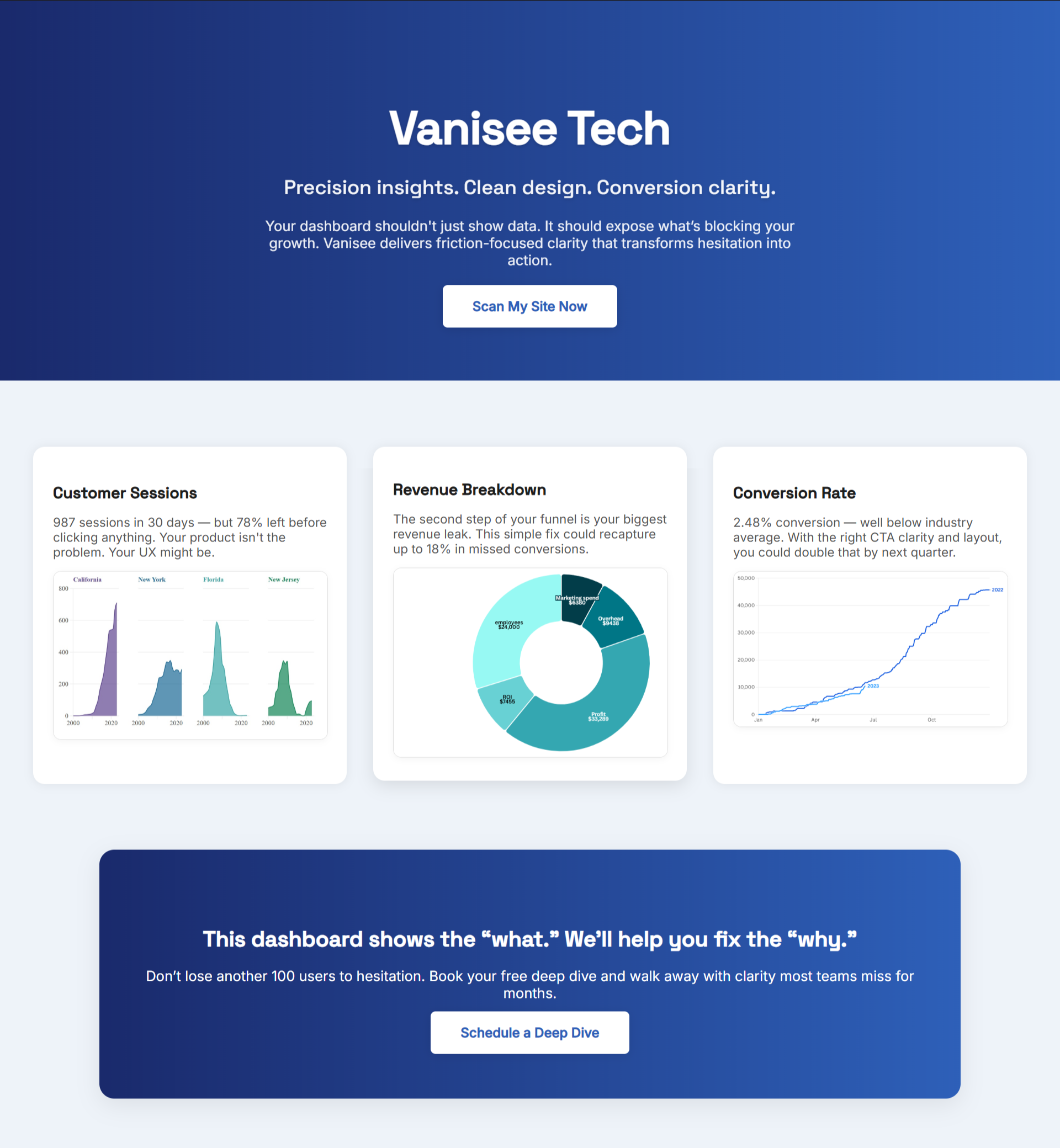The average shopper decides in seconds whether to act or keep scrolling. If your first screen can’t carry the sale, ads just buy exits. This playbook installs five elements that raise add-to-cart and finish more checkouts.
“Perfection is achieved not when there is nothing more to add, but when there is nothing left to take away.” — Antoine de Saint-Exupéry
The Five-Element First Screen
Put these above the fold on desktop and mobile. Ship them in plain, concrete language.
- Offer Headline (7 words max).
What it is and for whom. Examples: “Organic shampoo for curls,” “MagSafe leather wallet.” Kill adjectives that don’t change a decision. - Price + Delivery Window + Returns
Final price, earliest delivery date, and return window live within one screen of the button. This defuses the three most common purchase hesitations. - Primary CTA (single color, single verb).
One action (“Add to cart”). Wide tap target. No twins, no ghosts, no “Learn more” beside it. - One Micro-Proof Element.
Star rating, short testimonial, or “1-year warranty.” Credible, scannable, and near the button. If you’re tempted to bury it in a carousel, don’t. - Choice Sanity.
Variants fit on one line or a tidy grid. Default to the most purchased. Remove forced account creation—offer express pay.
.png)
If a task doesn’t move one of these five into view, it waits. That discipline prevents the detours called out in The Trap of Beautiful but Broken Custom E-commerce Development.
How to Ship the Upgrade in 48 Hours
Day 1, AM — Inventory the first screen.
Screenshot desktop and mobile. Mark what’s missing from the five.
Day 1, PM — Draft in plain English.
Write the 7-word headline, delivery and returns copy, and a single-sentence testimonial. Place price and risk copy within one screen of the button.
Day 2 — Implement and publish.
Remove extra CTAs, set one express-pay option, and trim variant sprawl. Launch to 50% of traffic if your tooling allows.
Measure Signals That Predict Sales
Skip vanity graphs. Watch the page-level signals that move revenue:
- Comprehension rate: % of 5-second testers who restate the offer.
- CTA visibility: % of sessions where the primary CTA appears in the first screen.
- Click-to-proof: % who interact with stars/guarantee near the CTA.
- Checkout completion: Starts vs. orders, split by device and source.
If those numbers stall while sessions climb, you don’t have a traffic problem—you have clarity debt. That pattern and how it snowballs is unpacked in Why Custom E-commerce Development Delays Quietly Kill Momentum.
Copy You Can Steal (and Where to Place It)
Place these within one scroll of the button:
- “Ships tomorrow from Austin.”
- “Free 30-day returns—prepaid label in every box.”
- “4.8/5 from 1,243 buyers.”
- “Secure checkout • Apple Pay • Shop Pay.”
Short, believable, and specific outperforms poetic. If a sentence can’t be verified, cut it.
Friction You Can Delete Today
- Replace a rotating hero with one sharp product image and zoom.
- Convert “Details” accordions into two short bullets (materials + sizing).
- Move coupon entry to the end of checkout; pre-apply discounts from links.
- Combine “Continue” and “Next” into a single primary action throughout the flow.
- Remove full-page pop-ups on entry; delay list building until after purchase.
When teams optimize outside the decision surface, the result is dashboards that glow while revenue stalls—exactly the false comfort described in The False Security of Custom E-commerce Development.
A Lightweight Test Rhythm
- Pick one lever (headline, placement of price/risk, CTA contrast).
- Run for seven days or 1,000 sessions per device—whichever hits first.
- Keep winners that lift comprehension and add-to-cart by ≥5%; roll back losers in minutes.
- Document with before/after screenshots and a one-line decision. Next week, repeat on the next highest-traffic product page.
Why BluePing Helps You Win Faster
You don’t need a quarter to learn if the first-screen upgrade works—you need page-level truth. BluePing reads a live product page in ~30 seconds and delivers a preview with 2–3 strengths and one visible red-flag to fix now. The deeper list unlocks in the full report and stays private to your team.
Scan your highest-traffic product page this week. Join the waitlist for early access; the preview locks after 10 minutes to protect your data.

.png)


.png)
